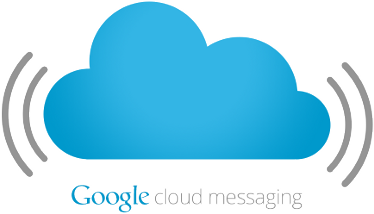
By Subir Jhanb, Google Cloud Messaging team
Developers from all segments are increasingly relying on Google Cloud Messaging (GCM) to handle their messaging needs and make sure that their apps stay battery-friendly. GCM has been experiencing incredible momentum, with more than 100,000 apps registered, 700,000 QPS, and 300% QPS growth over the past year.
At Google I/O we announced the general availability of several GCM capabilities, including the GCM Cloud Connection Server, User Notifications, and a new API called Delivery Receipt. This post highlights the new features and how you can use them in your apps. You can watch these and other GCM announcements at our I/O presentation.
Two-way XMPP messaging with Cloud Connection Server
XMPP-based Cloud Connection Server (CCS) provides a persistent, asynchronous, bidirectional connection to Google servers. You can use the connection to send and receive messages between your server and your users' GCM-connected devices. Apps can now send upstream messages using CCS, without needing to manage network connections. This helps keep battery and data usage to a minimum. You can establish up to 100 XMPP connections and have up to 100 outstanding messages per connection. CCS is available for both Android and Chrome.
User notifications managed across multiple devices
Nowadays users have multiple devices and hence receive notifications multiple times. This can reduce notifications from being a useful feature to being an annoyance. Thankfully, the GCM User Notifications API provides a convenient way to reach all devices for a user and help you synchronise notifications including dismissals - when the user dismisses a notification on one device, the notification disappears automatically from all the other devices. User Notifications is available on both HTTP and XMPP.
Insight into message status through delivery receipts
When sending messages to a device, a common request from developers is to get more insight on the state of the message and to know if it was delivered. This is now available using CCS with the new Delivery Receipt API. A receipt is sent as soon as the message is sent to the endpoint, and you can also use upstream for app level delivery receipt.
How to get started
If you�re already using GCM, you can take advantage of these new features right away. If you haven't used GCM yet, you�ll be surprised at how easy it is to set up — get started today! And remember, GCM is completely free no matter how big your messaging needs are.
To learn more about GCM and its new features — CCS, user notifications, and Delivery Receipt — take a look at the I/O Bytes video below and read our developer documentation.
No comments:
Post a Comment